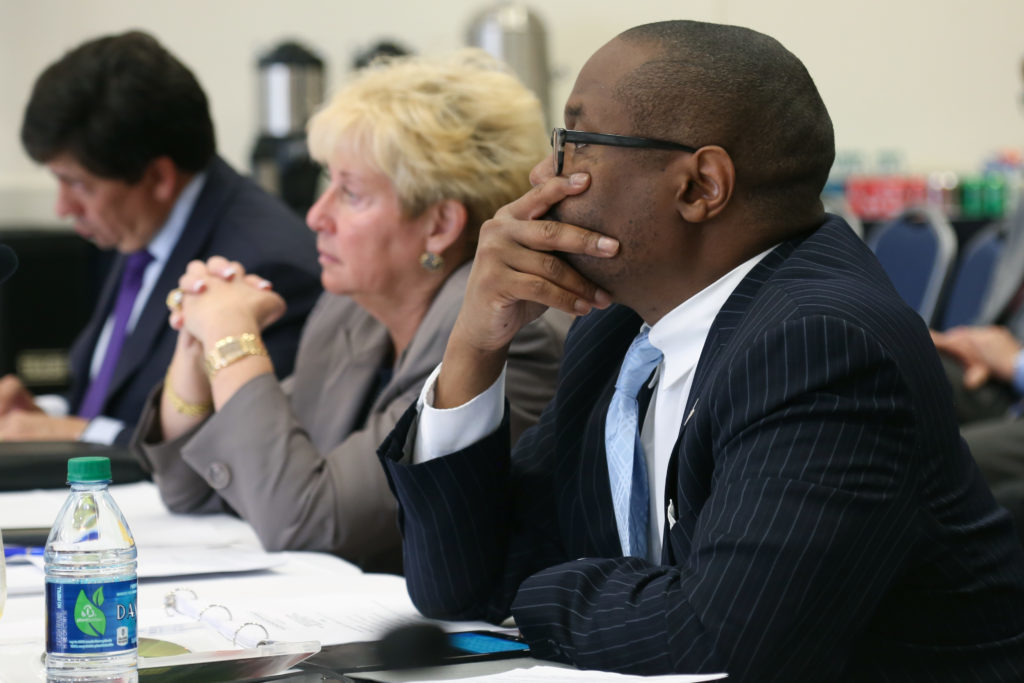Officials won’t say whether schools reached their own individual fundraising targets during the University’s record-breaking $1 billion campaign.
Gifts to GW’s 13 schools and colleges were on track to make up the largest portion of donations to the campaign, which officially ended in June with $1.02 billion raised. Deans set high targets – hoping to raise at least $150 million for the public health school and $75 million for the business school – but the University’s top fundraising official declined to give information about fundraising at individual schools, a move experts said could discourage future giving because campaign donors want to know where their money is being spent.
Matt Manfra, the interim vice president of development and alumni relations, said some donations to the campaign were given to interdisciplinary projects like sustainability, cybersecurity and women’s leadership, so they couldn’t be credited to an individual school.
“Our primary focus throughout the campaign was on tracking progress toward the overall campaign goal,” he said in an email. “While we asked each school to set aspirational goals that affirmed the University’s ability to raise $1 billion, our practice has been to provide campaign information at the University level.”
Although officials won’t release school-specific information, University President Thomas LeBlanc said the data would be one of his focal points as he reviews the University’s fundraising strategy in his first year.
“We need to look at campaign results so we can ask how much did that school invest in development, how much did that school raise?” LeBlanc said in an interview last month. “The beauty of the higher education system is we’re all very open about our data. We don’t consider ourselves secret private corporations that are very secretive about our information. “
The Board of Trustees is also examining the University’s fundraising effort, as part of a new volunteer engagement task force examining ways to increase alumni involvement with the University.
Fundraising goals were set near the start of the drive by all 13 schools, raging from as high as $225 million for the medical school to $10 million for the School of Media and Public Affairs.
On a website dedicated to showcasing the campaign’s impact on campus, officials did release information about how much of the campaign’s contributions were directed toward different priorities like student aid, academics and construction projects.
Michael Morsberger, the chief financial officer at the University of Central Florida who served as vice president of alumni relations and development at GW from 2010 to 2014, said the University might be reluctant to show one school faring worse than another in reaching fundraising goals, even though variation across schools is typical in major campaigns.
He said donors care about knowing where their money is going, but he wasn’t surprised the University wouldn’t release numbers in the first few months after the effort concluded. The administrative changes during the campaign may have made it difficult to gather the data, he said.
In 2014, Morsberger left the top development position and Aristide Collins took on the role in the middle of the campaign. Collins left the campaign in January to head LeBlanc’s transition team and now serves as his chief of staff.
It’s typical for universities to show where their money went — usually in a public report — even if there are some donations that cannot be connected to only one school, he said.
In 2015, Siemens, an industrial manufacturing company, donated $30 million worth of software to the School of Engineering and Applied Sciences, but Morsberger said because the software could be used across schools, that donation could not be counted for only SEAS.
The subtleties in measuring fundraising means that it could take several months for the University to have school-specific information, he said.
“I’m an advocate for transparency and trying to show people the results but again, it takes time,” he said.
Noah Drezner, a professor of higher education administration at Columbia Teacher’s College, said it is not unusual for certain schools within a university to underperform relative to others, but to not report how schools fared in the fundraising effort can dissuade donors from participating in future campaigns.
“If people don’t believe the story they’re getting about the last campaign, or where the dollars are being spent, there is a risk of alienating them or not having them feel like they want to participate in the future,” he said.
John Taylor, a partner at the Alexander-Hass, a consulting firm for university fundraising, said setting smaller goals inside of a larger push is an engagement tool often used to get all schools in a university invested in a major fundraising blitz but the end result is the most important marker of success.
He said universities may not show all of their donors all of the details in a campaign, but typically donors won’t continue to give unless they can how their money was put to use in a particular school or program.
“Gone are the days of where you can make a donation and not know where it’s going,” he said.





